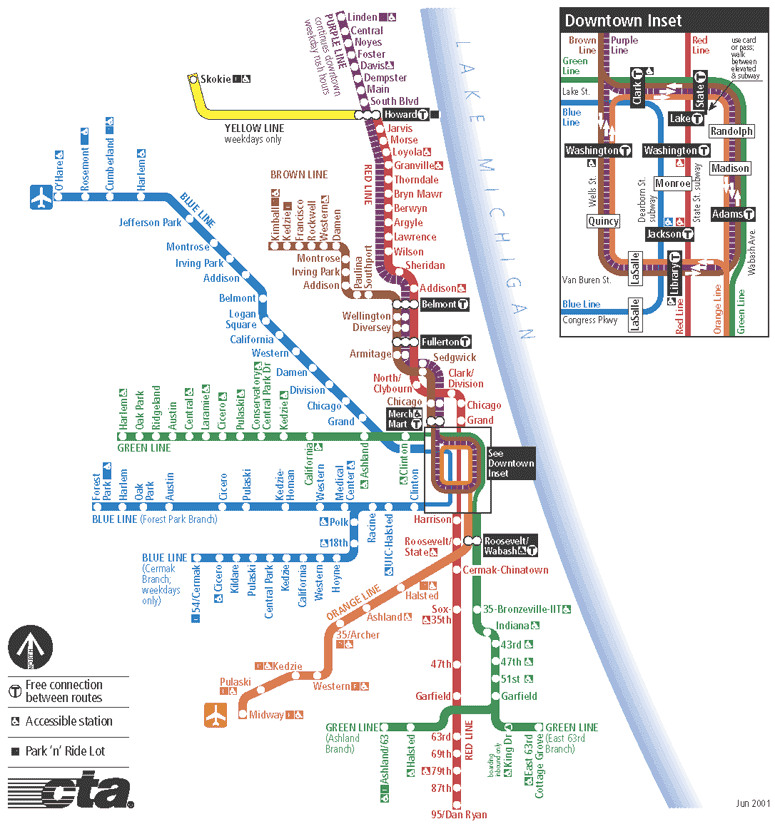Innovation and competition make the housing-transportation connection work
 |
| A map of the Chicago Transit Authority system. |
Note: a version of this post was also published on the National Journal’s Transportation Experts blog.
This country is in desperate need of innovation. We are still mired in a recession triggered by a collapse in real estate that was driven in no small part by the exhaustion of the “drive-til-you-qualify” housing market. The housing market was showing profound signs of change before the real estate-triggered financial meltdown halted all development, with surging demand for more conveniently located, walkable neighborhoods. As just one example, the city of Atlanta added nearly 120,000 new residents since 2000, a population increase of 28 percent, after decades of serious population loss.
Two summers after the devastating run of soaring gas prices in 2008, we are again suffering from anxiety over our over-reliance on petroleum as oil gushes into the Gulf of Mexico. Just yesterday, the House Livable Communities Task Force sent House leadership an urgent letter arguing that Americans must be given new options for where they live and how they get around as part of the long-term solution to this potentially crippling vulnerability. As they noted:
The transportation sector accounts for almost three-quarters of U.S. oil consumption, and Americans consume over 10 percent of the world’s oil just driving around. … Livable communities offer a safer, cleaner and more economical approach to reducing our nation’s energy consumption … .
“Livability” has become the administration’s catch-all term for providing communities the resources and expertise they need to give their citizens the living and travel options they are looking for, while sustaining a high quality of life. With the old model gasping its last breaths, our local communities and metro areas are the laboratories for emerging innovations in building the next America. The best way to sort out the most promising new ideas is through the tried-and-true American way: Competition.
The principles articulated by the three-agency partnership are an excellent prism through which to evaluate grant applications from local communities. The trick will be holding themselves and their grant recipients accountable for collecting and evaluating data on the success of these projects. Did that new neighborhood near a rail transit station draw the expected customers? Did residents and visitors drive less, walk and use transit more? Are residents satisfied, and if not, what would they change? There won’t be a one-size solution, but we should all be able to learn lessons about what works in a given region of the country or in certain types of communities.
This is an unsettling time for many of us, but it also could be an exciting time of positive change and new discoveries. The Obama administration deserves a lot of credit both for recognizing the link between housing, transportation, economic development and environmental stewardship and initiating a bold partnership to make sure this coordination happens. We should support their impulse to prod innovation, even as we hold their feet to the fire in evaluating results.




















Pingback: New Urbanism News 7/19/10 | Mixed Use Development